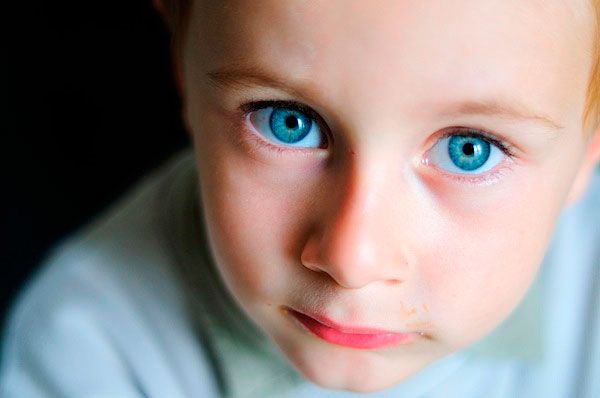New publications
Camera with flash can help diagnose visual impairment in children
Last reviewed: 02.07.2025

All iLive content is medically reviewed or fact checked to ensure as much factual accuracy as possible.
We have strict sourcing guidelines and only link to reputable media sites, academic research institutions and, whenever possible, medically peer reviewed studies. Note that the numbers in parentheses ([1], [2], etc.) are clickable links to these studies.
If you feel that any of our content is inaccurate, out-of-date, or otherwise questionable, please select it and press Ctrl + Enter.
Ophthalmologist Svetlana Korbutyak shared information about how to recognize certain eye diseases in children using a regular camera with a flash.
Most parents believe that a baby during the first months of life sees practically nothing around him and does not pay attention to external stimuli. However, this is far from true: the baby's gaze is able to fix almost everything, however, only at a short distance. It is during this period that it is extremely important to recognize any initial vision pathologies in order to be able to correct them in the future.
In the first months after the birth of a child, the most common problems and adverse changes in the organs of vision most often develop. How can parents detect them without resorting to the help of doctors?
Svetlana Korbutyak is confident that the early development of diseases can be determined, and for this you will need an ordinary camera flash.
That is, to diagnose vision, you just need to take a photo of the child using a flash.
If the eyes look like red dots in the photograph, this is a favorable sign: the baby has no pathology.
If one or both eyes are reflected white, then this is a pathognomonic symptom of cataracts – clouding of the lens substance or its capsule.
The greenish-yellow color of the eyes in the photograph directly indicates that the child must be shown to an ophthalmologist.
In addition to the symptoms listed above, parents should pay attention to whether the baby's eyes are the same size, and whether his reaction to a sharp and bright flash of light is noticeable. It is a bad sign if the child has one eyelid drooping - you will need to consult not only an ophthalmologist, but also a surgeon. And during a flash, any healthy child squints - such a reaction is considered normal and indicates a good condition of the visual organs.
Any newborn baby's vision is checked in the maternity ward. After that, it is recommended to show the baby to the doctor one month, six months and twelve months after birth. The pediatric ophthalmologist will examine and evaluate the condition of the fundus, the size and symmetry of the pupils. At the same time, the pupil's reaction to a light stimulus is examined and the general condition of the visual organs is assessed.
It is really very important to check the development of the baby's visual function, and the task of parents is to promptly inform the doctor of any suspicions. It is worth noting right away that physiological strabismus is often observed in newborns - but it cannot be considered dangerous. In any case, it is better to show the child to a specialist who will say with certainty whether such a symptom is a variant of the norm or pathology.

However, you should not overdo it with the flash: many doctors do not recommend turning it on at all when photographing newborns. And there is a grain of truth in this. When photographing, you cannot come close to the child, you cannot turn on the flash in a dark or semi-dark room, so as not to frighten or blind the baby. Also, you should not take several pictures in a row: one photo will be enough to diagnose the organs of vision.
 [ 1 ]
[ 1 ]
